New York Rangers best trades in past 50 years, including Mark Messier
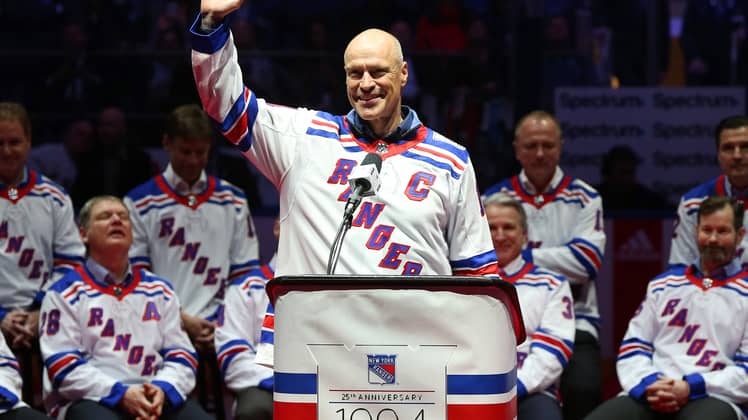
In the past 50 years, the New York Rangers have made their share of trades, from blockbusters to minor-league swaps, ones that worked out, others not so much. Some even altered the history of the franchise.
Two of the most successful eras in team history — the run to the Stanley Cup in 1994 and the first half of the 2020s when the Rangers won the Presidents’ Trophy last season and reached the conference final twice in three seasons – have been keyed by deals that brought important pieces to the Big Apple.
So, let’s start there, with the positive.
Related: 5 iconic Rangers play-by-play calls by Sam Rosen
Best Rangers trades in past 50 years
Here’s a look at the seven best deals the Rangers have made in the past five decades.
7. Lowe tide

The Trade: Rangers acquired defenseman Kevin Lowe from the Edmonton Oilers for forward Roman Oksiuta and a third-round pick in the 1993 NHL Draft.
Date: Dec. 11, 1992
Why it mattered: When your team hasn’t won a championship in more than 50 years, there are worse ideas that bringing in players with championship pedigrees. Landing Mark Messier from the Edmonton Oilers in October 1991 was a great start, but it wasn’t enough to bring the Stanley Cup back to New York in the spring of 1992. However, with the Oilers still in selloff mode, Rangers general manager Neil Smith continued shopping at their clearance sale for the next two seasons.
He added to his collection of ex-Oilers midway through 1992-93 by bringing in Kevin Lowe, a five-time Cup winner whose defensive skills were invaluable in the Oilers heyday but weren’t as useful on a team that was in tear-down mode. Lowe sat out the first two-plus months of the 1992-93 season in a contract dispute but quickly signed after the deal was made.
In addition to his still-formidable defensive skills, Lowe brought leadership and a veteran championship presence to a defense corps led by young, offense-minded players like Brian Leetch and Sergei Zubov (who became Lowe’s regular partner). Playing mostly with Lowe was a big reason that Zubov finished the 1993-94 season with a team-high 89 points. Lowe also overcame a shoulder injury to play all but one playoff game on the run to the Cup.
The price turned out to be cheap. The Oilers hoped Oksiuta would help replace some of the talent they were shipping out (including Esa Tikkanen and Craig MacTavish to the Rangers). He did put up good numbers in in the AHL but managed just 87 points in 153 NHL games before eventually returning to Russia.
6. Getting Gartner
The Trade: Rangers acquired forward Mike Gartner from the Minnesota North Stars for forward Ulf Dahlen, a fourth-round pick in the 1990 NHL Draft and future considerations.
Date: March 6, 1990
Why it mattered: Second-year GM Smith had the Rangers on the upswing as the 1989-90 NHL trade deadline was approaching. But he knew they needed a “home run hitter,” a player who was a threat to score any time he was on the ice. Smith had his eye on Mike Gartner, one of the league’s fastest skaters and best goal-scorers. He landed him in exchange for Ulf Dahlen, a solid player but not in Gartner’s league as a scorer.
Gartner arrived and did exactly what he was acquired to do — put the puck in the net. He scored 11 times in 12 games after the trade to complete a 45-goal season, then pumped in at least 40 goals in each of the next three seasons. No player in team history had put up those kind of numbers on such a consistent basis. He was a big reason the Rangers won the Presidents’ Trophy in 1991-92 and earned the first Game 7 win in team history in the spring of 1992.
But the Rangers missed the playoffs in 1992-93, and new coach Mike Keenan wasn’t a big fan of Gartner, whose goal numbers dropped in 1993-94. Keenan went to Smith and said he wanted Gartner gone; Smith sent him to the Toronto Maple Leafs for longtime Edmonton Oilers star Glenn Anderson during a wild spree of deals before the 1994 NHL Trade Deadline. Anderson went on to help the Rangers win the championship that spring, scoring two game-winning goals in the Stanley Cup Final.
Ironically, Gartner’s play with his new team nearly got him a chance to exact some revenge on his old one; he helped the Maple Leafs reach the Western Conference Final before losing to the Vancouver Canucks. Gartner retired in 1998 with 708 goals; he’s in the Hall of Fame and was named one of the NHL’s 100 Greatest Players in 2017.
Dahlen’s career wasn’t too shabby — he finished with 301 goals in 14 seasons. But he wasn’t Gartner, one of the most dangerous players in Rangers history.
5. The McDonagh heist
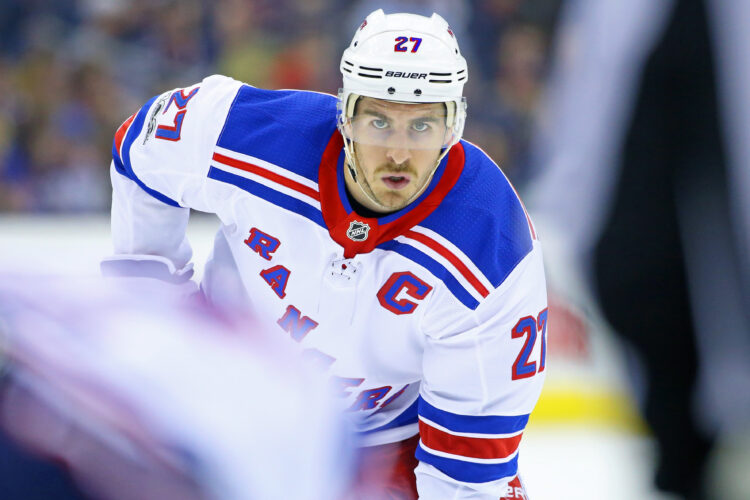
The Trade: Rangers acquire defensemen Ryan McDonagh and Doug Janik along with forwards Chris Higgins and Pavel Valentenko from the Montreal Canadiens for center Scott Gomez and forwards Tom Pyatt and Mike Busto.
Date: June 30, 2009
Why it mattered: Plucking a talented young defenseman from a longtime rival would make any general manager smile. Perhaps the only thing better is ditching a bad contract at the same time.
That’s what Rangers GM Glen Sather did in the summer of 2009.
Two years earlier, Sather had signed center Scott Gomez to a big-money, long-term contract. But after a disappointing 2008-09 season, Sather wanted to make a change as well as pare his payroll. In what was regarded as mostly a salary dump, the Rangers sent Gomez to the Montreal Canadiens for four players, including a young defenseman named Ryan McDonagh who had been their top pick in the 2007 NHL draft but wasn’t developing as fast as they’d expected.
Chris Higgins, a veteran forward from Long Island, was regarded as the best part of the return for the Rangers. But that changed as soon as McDonagh arrived during the 2010-11 season.
McDonagh was a perfect full-service defenseman. He generated offense, devoured ice time, was a plus player in every season with the Rangers (at least plus-11 in the first seven) and eventually served as captain. He was a key contributor in the run to the 2014 Stanley Cup Final and fueled the Rangers’ success during the early and mid-2010s. The only thing he didn’t do in New York was win the Stanley Cup, though he did so twice after being traded to the Tampa Bay Lightning during the 2017-18 season.
Meanwhile, Gomez never scored more than 12 goals in any season after leaving the Rangers before he retired in 2016.
4. Czech mate

The Trade: Rangers acquired forward Jaromir Jagr from the Washington Capitals for forward Anson Carter.
Date: Jan. 23, 2004
Why it mattered: Jaromir Jagr spent the 1990s piling up points and scoring titles, and helped the Pittsburgh Penguins win the Stanley Cup in 1991 and 1992. He was still an elite player in the early 2000s — but by now was also one of the League’s highest-paid stars. The Washington Capitals acquired him in 2001, but they missed the playoffs in 2001-02 and were bounced in the first round a year later. Washington fell apart in 2003-04 and decided at midseason that Jagr and his huge contract were expendable. The Rangers, headed for a sixth straight non-playoff season, were happy to take him for the low price of Anson Carter, a versatile but unspectacular forward.
The payoff came after play resumed following the lockout that wiped out the 2004-05 season. Playing primarily on a line with Michael Nylander and Martin Straka, Jagr had what remains the greatest offensive season in Rangers history. He set still-standing team records for goals (54) and points (123), missed his sixth Art Ross Trophy as NHL scoring leader by two points, was a First-Team All-Star and voted by his fellow players as winner of the Lester B. Pearson Trophy (now the Ted Lindsay Award) as the League’s outstanding player. The only thing that went wrong was a shoulder injury that knocked him out of the playoffs and was a major reason the Rangers were bounced by the New Jersey Devils in the first round.
Jagr, who was named captain, followed his record-breaking showing by recording 96 and 71 points in the next two seasons, helping the Rangers make the playoffs each time. But by then, Jagr was 36 – and Sather opted not to re-sign him. Instead, Jagr played in Russia for three years before returning for six more seasons in the NHL, including a 27-goal, 66-point showing in 2015-16 that helped the Florida Panthers win the first division title in their history.
Though his Rangers tenure lasted just three seasons, the future Hall of Famer (he’s still playing in Czechia) made a huge impact during his short time on Broadway.
3. Fox comes home
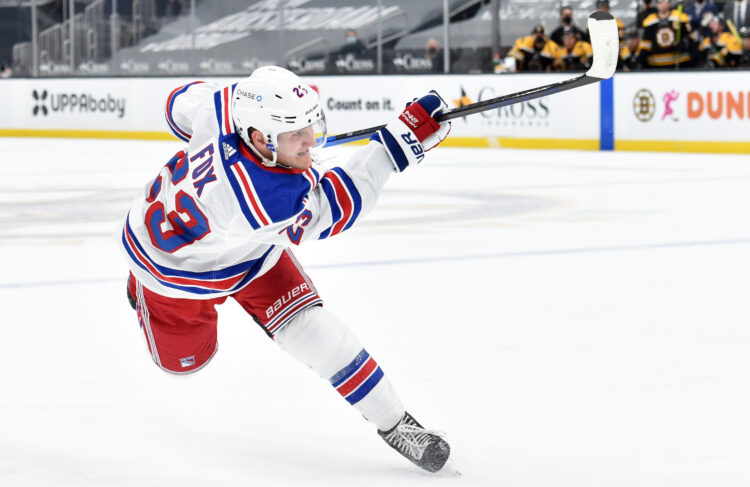
The Trade: Rangers acquired defenseman Adam Fox from the Carolina Hurricanes for their second-round pick in the 2019 NHL Draft and a conditional third-round pick in the 2020 draft.
Date: April 23, 2019
Why it mattered: Fox grew up in Jericho, New York, as a Rangers fan and was determined he would play only for them. That’s what he’s done, even if it’s meant a couple of detours along the way.
The Calgary Flames chose Fox in the third round of the 2016 NHL Draft before he headed to Harvard. He opted not to sign with the Flames, who traded him to the Carolina Hurricanes after his second season in college. Fox elected to return to school for a third season and was named ECAC Player of the Year. With the possibility that he could become an unrestricted free agent, the Hurricanes decided they didn’t want to lose him for nothing and traded him to the Rangers for two draft picks.
Calgary and Carolina’s loss was the Rangers’ gain. Fox was among the top NHL rookies in 2019-20, then won the Norris Trophy as the League’s top defenseman the following season. He was a First-Team All-Star again in 2022-23, a Second-Teamer last season and has averaged 73 points during the past three seasons. He’s never been worse than plus-18 in his five seasons and has averaged at least 23:27 of ice time in each of the past four.
At age 26, Fox is entering his prime. There figures to be at least another Norris Trophy and a few more postseason All-Star teams in his future. If the Rangers win the Stanley Cup in the next decade, expect Fox to be a major reason.
2. The Mark of “Z”
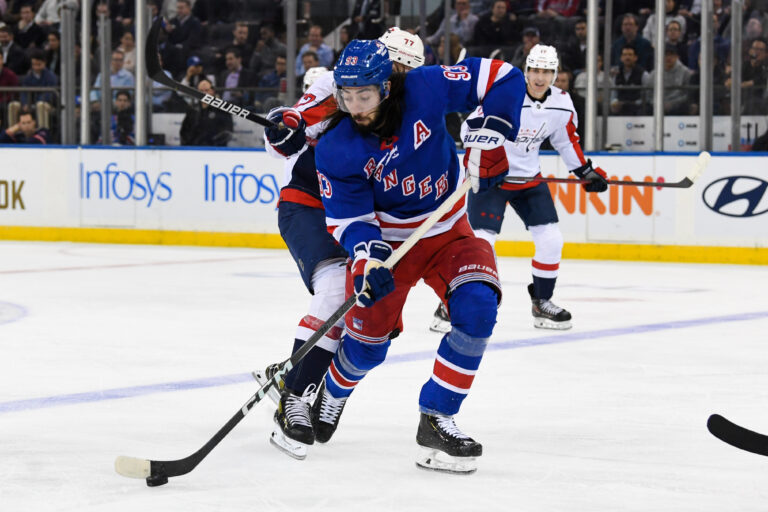
The Trade: Rangers acquired center Mika Zibanejad and a second-round pick in the 2018 NHL Draft from the Ottawa Senators for center Derick Brassard and a seventh-round pick in 2018.
Date: July 18, 2016
Why it mattered: It’s hard to conceive now, but in a swap of two players drafted with the No. 6 overall pick five years apart, the Rangers were giving up the more productive player. Brassard, the sixth player taken in 2006, was 28 and coming off his two best NHL seasons with the Rangers, including a 27-goal, 58-point effort in 2015-16. Zibanejad, the No. 6 pick in 2011, had been something of a disappointment to the Senators, never scoring more than 21 goals or 51 points in four seasons. How disappointing? The Rangers even got a second-rounder in the bargain.
But GM Jeff Gorton saw something that perhaps the Senators didn’t — and he was right.
Zibanejad has grown into one of the best two-way centers in the NHL. He’s averaged more than a point per game during the past six seasons, and scored 41 goals in just 57 games in 2019-20 and 39 goals and 93 points in 2022-23. Zibanejad is a big reason the Rangers have had one of the most lethal power plays during the past few seasons, is a threat to score as a penalty-killer and is a combined plus-70 in the past three seasons. At age 31, he should have several more productive seasons ahead of him.
And Brassard? He never had more than 18 goals or 38 points while playing with nine more teams before retiring this summer.
1. The Captain arrives
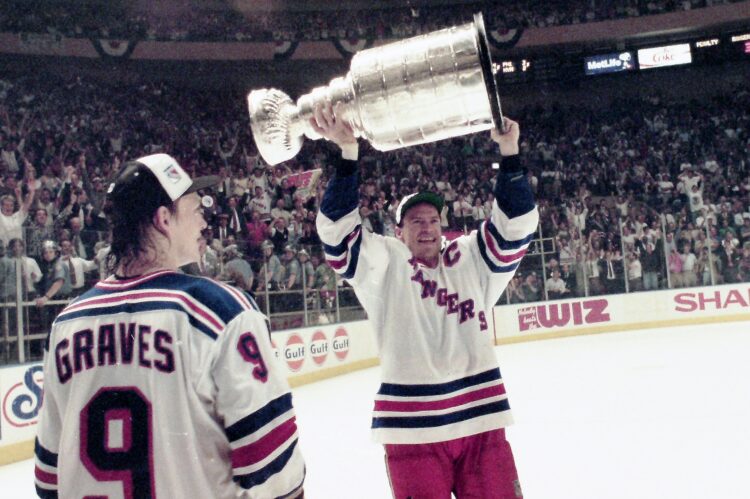
The Trade: Rangers acquired center Mark Messier and future considerations (defenseman Jeff Beukeboom) from the Edmonton Oilers for center Bernie Nicholls, forwards Steven Rice and Louie DeBrusk, and future considerations (defenseman David Shaw).
Date: Oct. 4, 1991.
Why it mattered: The Rangers had improved in their three seasons with Smith as GM, finishing on top of their division in 1989-90 (their first title of any kind in 48 years). But Smith knew they were still a long way from competing for the Stanley Cup, and that he had to bring in a star player who could also be a leader.
As the start of the 1991-92 season, he got his man — and then some.
Mark Messier was already a five-time Cup champion with the Oilers when Smith rolled the dice and gave up high-scoring center Bernie Nicholls as well as two young forwards, Steven Rice and Louie DeBrusk, and defenseman David Shaw, for “The Messiah,” who proved to be everything they could have asked for from the moment he made his debut in the home opener. “The Captain” won the Hart Trophy as NHL MVP in 1991-92, helping the Rangers win the Presidents’ Trophy. Two years later, he scored the Cup-winning goal in Game 7 of the Stanley Cup Final when the Rangers ended their 54-year title drought. Among his teammates was Jeff Beukeboom, who turned into much more than a throw-in by becoming Brian Leetch’s partner on the top defense pair.
Meanwhile, the Oilers began a slide that lasted for the better part of 35 years. None of the players who went the other way were major contributors.
Messier was already a Hall of Famer before he arrived in New York. What he did with the Rangers turned him into a hockey immortal. He is “The Captain” forever.
More About:New York Rangers Analysis
